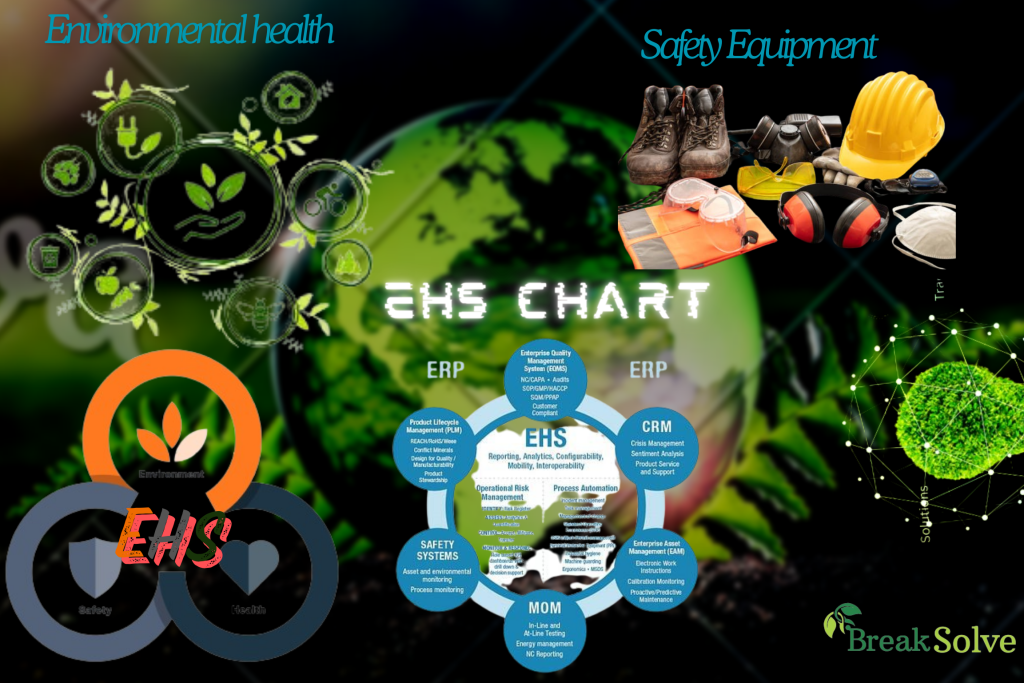
Environmental health and safety (EHS) is a crucial aspect of modern business practices, aimed at ensuring the well-being of both the environment and the individuals within it. EHS encompasses a wide range of practices and regulations designed to protect human health and preserve the natural environment. As industries grow and technological advancements continue, the importance of maintaining robust EHS standards has never been more critical. This article explores the significance of EHS, its key components, and the benefits of implementing effective EHS programs.
Understanding Environmental Health and Safety
Environmental health and safety is a multidisciplinary field that focuses on minimizing risks and preventing harm to people and the environment. EHS programs are essential for complying with legal requirements, safeguarding public health, and promoting sustainable business practices. The primary components of EHS include:
Environmental Protection: This involves managing and reducing the impact of human activities on the environment. Key areas include waste management, pollution control, resource conservation, and sustainable practices. Businesses must adhere to environmental regulations to minimize their ecological footprint and contribute to a healthier planet.
Occupational Health and Safety: Ensuring the safety and well-being of employees in the workplace is a critical aspect of EHS. This involves identifying potential hazards, implementing safety protocols, providing proper training, and promoting a culture of safety. A safe work environment reduces the risk of accidents, injuries, and illnesses, leading to higher productivity and employee satisfaction.
Regulatory Compliance: Businesses must comply with various local, national, and international regulations related to environmental health and safety.Regular audits and inspections are necessary to ensure adherence to these regulations.
The Importance of Environmental Health and Safety
Implementing effective EHS programs offers numerous benefits for businesses, employees, and the environment. Some of the key advantages include:
Risk Management: EHS programs help identify and mitigate potential risks before they result in harm. By proactively addressing hazards, businesses can prevent accidents, reduce liability, and protect their workforce.
Legal Compliance: Adhering to EHS regulations ensures that businesses operate within the law, avoiding costly fines and legal actions. Compliance also demonstrates a commitment to ethical practices and corporate responsibility.
Employee Well-Being: A strong focus on occupational health and safety fosters a positive work environment. Employees who feel safe and valued are more productive, motivated, and loyal to their employers.
Environmental Stewardship: EHS programs promote sustainable practices that reduce environmental impact. This includes minimizing waste, conserving resources, and reducing emissions. Businesses that prioritize environmental protection contribute to the global effort to combat climate change and preserve natural resources for future generations.
Reputation and Brand Value: Companies with robust EHS programs are viewed more favorably by consumers, investors, and other stakeholders. A strong EHS record enhances a company’s reputation, builds trust, and can lead to increased business opportunities.

Implementing Effective EHS Programs
Creating and maintaining an effective EHS program requires a comprehensive approach. Here are some steps businesses can take to ensure success:
Conduct Risk Assessments: Regularly assess potential hazards in the workplace and the environment. This includes evaluating processes, equipment, and activities that could pose risks.
Develop Policies and Procedures: Establish clear EHS policies and procedures that align with regulatory requirements and industry best practices. Ensure that these guidelines are communicated to all employees and stakeholders.
Provide Training and Education: Equip employees with the knowledge and skills needed to identify and manage risks. Regular training sessions and workshops can reinforce the importance of EHS and promote a culture of safety.
Monitor and Evaluate: Continuously monitor EHS performance through audits, inspections, and data analysis. Use this information to identify areas for improvement and implement corrective actions.
Engage Stakeholders: Involve employees, management, and external stakeholders in EHS initiatives. Collaboration and open communication can enhance the effectiveness of EHS programs and foster a shared commitment to safety and sustainability.
Environmental health and safety is a vital aspect of responsible business operations. By prioritizing EHS, companies can protect their employees, reduce environmental impact, comply with regulations, and enhance their reputation. As we continue to face global challenges such as climate change and public health crises, the importance of robust EHS programs cannot be overstated. Embracing EHS principles not only ensures compliance and safety but also paves the way for a more sustainable and prosperous future.



